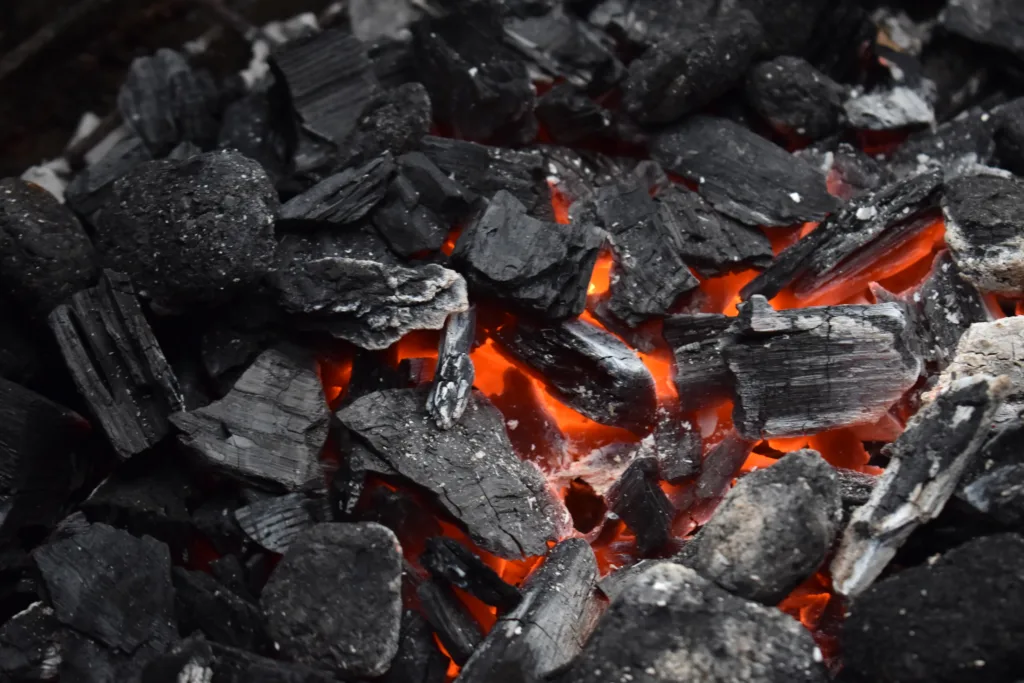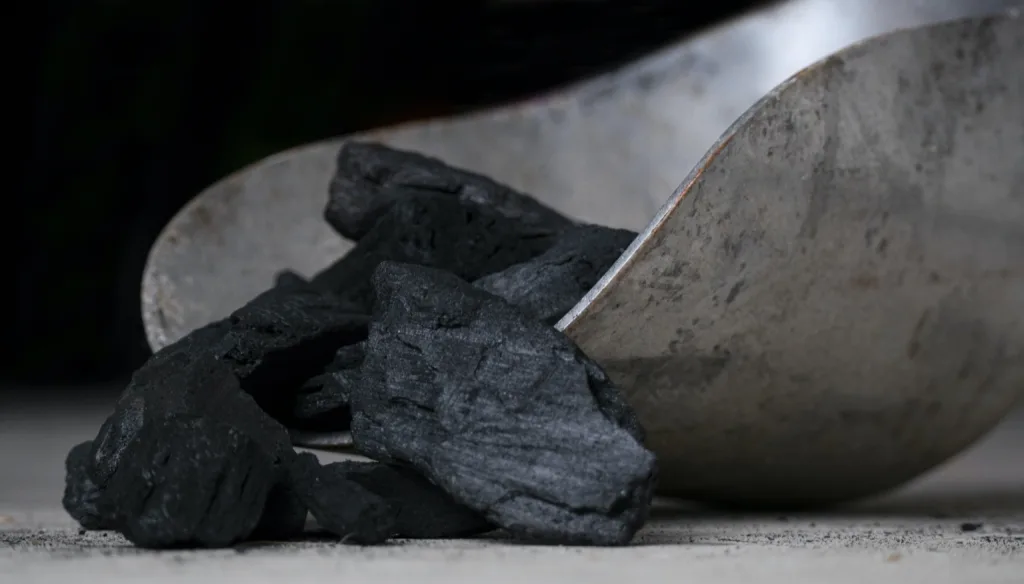Coal is a widely used fossil fuel that has been instrumental in providing energy for various industries and power plants. One important aspect of coal that determines its quality and energy content is its calorific value, often measured in kilocalories (kcal).
The calorific value of coal refers to the amount of heat energy released when a certain quantity of coal is burned. It is a crucial factor in determining the efficiency and effectiveness of coal as a heating fuel. The higher the calorific value, the more energy is released during combustion.
In the case of coal, the calorific value is typically measured in kilocalories per kilogram (kcal/kg). This unit corresponds to the amount of heat required to raise the temperature of one kilogram of water by one degree Celsius. For example, a coal with a calorific value of 7,000 kcal/kg means that it can release 7,000 kilocalories of heat energy when burned completely.
Different types of coal have varying calorific values due to differences in their composition and carbon content. Anthracite coal, known for its high carbon content and superior heating properties, typically has a calorific value ranging from 29.3 to 33.5 megajoules per kilogram (MJ/kg). This makes it an excellent choice for power plants and heating purposes.
It is important to note that the calorific value of coal can also be expressed in other units, such as megajoules (MJ) or kilowatt-hours (kWh). For example, 7,000 kcal is approximately equivalent to 29.3 MJ or 8.141 kWh. These conversions allow for better understanding and comparison of energy values across different measurements.
When purchasing coal, it is essential to consider its net calorific value (NCV) or lower heating value (LHV). This value takes into account the heat of vaporization of the water vapor produced during combustion. NCV is determined by subtracting the heat of vaporization from the higher heating value.
By basing the purchase of coal on NCV, consumers can ensure that they are getting the most accurate assessment of the energy content of the fuel. This is crucial for industries and power plants that rely on coal for their operations, as it helps optimize efficiency and cost-effectiveness.
The calorific value of coal plays a crucial role in determining its quality and energy content. Anthracite coal, with its high carbon content, is known for its superior heating properties. Understanding the concept of kilocalories and their conversion to other units allows for better comparison and assessment of energy values. By considering the net calorific value when purchasing coal, consumers can make more informed decisions and optimize the use of this valuable fossil fuel.
How Many Kilocalories Are In A Kilo Of Coal?
A kilogram of coal contains approximately 7,000 kilocalories, which is equivalent to 29.3 megajoules (MJ) or 8.141 kilowatt-hours (kWh) of energy. The calorific value of coal can vary depending on the type, ranging from 29.3 MJ/kg for gas-flame coal to 33.5 MJ/kg for anthracite.
To put it simply, here is a breakdown of the energy content of coal:
– 1 kilogram of coal = 7,000 kilocalories
– 1 kilogram of coal = 29.3 megajoules
– 1 kilogram of coal = 8.141 kilowatt-hours
It’s important to note that the calorific value can differ based on the quality and type of coal. Gas-flame coal has a lower calorific value compared to anthracite, which is a higher-grade coal.

What Is Good Calorific Value Of Coal?
The good calorific value of coal is typically found within the range of 25 to 35 MJ/kg. This value represents the amount of energy that can be released when coal is burned. A higher calorific value indicates that the coal has a greater energy content and can produce more heat when used as a fuel source. This is generally desirable as it means that less coal is needed to generate the same amount of energy compared to coal with a lower calorific value.
Having a good calorific value is important for various applications where coal is used as a fuel, such as power generation, industrial processes, and residential heating. It allows for efficient utilization of the coal, leading to cost savings and reduced environmental impact.
To put the concept of calorific value into perspective, here are some other units of energy measurement that can be used to express the calorific value of coal:
– British Thermal Units (BTUs): The calorific value of coal can range from approximately 9,000 to 13,000 BTUs per pound.
– Kilocalories (kcal): One kilocalorie is equivalent to 4.184 kilojoules. The calorific value of coal is typically between 6,000 and 8,500 kcal/kg.
It’s worth noting that the actual calorific value of coal can vary depending on factors such as the type of coal, its moisture content, and impurities present. These variations can impact the energy output and efficiency of coal-fired processes. Therefore, it is important to consider the specific characteristics of the coal being used when assessing its calorific value.
What Is High Calorie Coal?
High calorie coal, also known as anthracite coal, is a type of coal that is widely recognized for its exceptional heating properties. This coal is primarily used as a fuel source in power plants and for residential heating purposes. The distinguishing feature of high calorie coal is its high calorie and carbon values, making it an excellent choice for generating heat.
Here are some key characteristics of high calorie coal:
1. Calorific Value: High calorie coal has a remarkably high calorific value, meaning that it releases a significant amount of heat when burned. This quality makes it highly efficient for heating applications, as it generates more heat per unit of coal compared to other types.
2. Carbon Content: High calorie coal contains a high percentage of carbon, which contributes to its superior heating capabilities. The high carbon content allows for a more complete combustion process, resulting in increased heat production and reduced emissions.
3. Low Moisture Content: Another advantage of high calorie coal is its low moisture content. The moisture content in coal can significantly affect its combustion efficiency. With low moisture levels, high calorie coal ignites more easily and burns more consistently, ensuring a steady and reliable heat output.
4. Clean Burning: Due to its high carbon content and low moisture levels, high calorie coal burns cleaner compared to lower grade coals. This means that it produces fewer pollutants and emissions, making it a more environmentally friendly choice for heating applications.
High calorie coal, or anthracite coal, is a top-quality fuel source that is widely used for heating purposes. Its high calorific value, high carbon content, low moisture levels, and clean burning characteristics make it an excellent option for power plants and residential heating systems.
How Do You Calculate Coal Calorific Value?
To calculate the calorific value of coal, you need to consider both its higher heating value (HHV) and its moisture content. The higher heating value refers to the total amount of heat released when coal is completely burned, while the moisture content represents the amount of water present in the coal.
Here is a step-by-step process to calculate the calorific value of coal:
1. Determine the moisture content: Coal typically contains some amount of moisture, which can vary depending on the source. To calculate the moisture content, you need to measure the weight of a representative coal sample before and after drying it in an oven at a specific temperature (usually around 105°C) until it reaches a constant weight. The difference in weight represents the moisture content.
2. Calculate the dry ash-free basis: The dry ash-free basis is a measure of the coal’s composition when all the moisture and ash content have been removed. It is calculated by dividing the weight of the coal sample after drying by the weight of the dried sample minus the weight of the ash obtained after burning the dried sample.
3. Determine the higher heating value: The higher heating value represents the total heat released when the coal is completely burned. It can be determined using bomb calorimetry, which is a laboratory technique that measures the heat of combustion. Alternatively, you can use reference tables or databases that provide the higher heating values for different types of coal.
4. Adjust for the moisture content: To calculate the calorific value, you need to adjust the higher heating value based on the moisture content. This adjustment accounts for the heat required to evaporate the moisture present in the coal. The adjustment can be made by subtracting the heat of vaporization of water from the higher heating value. The heat of vaporization is the amount of heat energy required to convert water from a liquid to a gaseous state.
5. Calculate the net calorific value: The net calorific value (NCV), also known as the lower heating value (LHV), is the final value obtained after adjusting the higher heating value for the moisture content. It represents the amount of heat available when coal is burned without fully condensing the water vapor produced during combustion.
To calculate the calorific value of coal, you need to determine the moisture content, calculate the dry ash-free basis, determine the higher heating value, adjust for the moisture content by subtracting the heat of vaporization, and finally obtain the net calorific value or lower heating value.

Conclusion
Coal is a valuable and widely used energy resource due to its high calorific value and carbon content. With a calorific value ranging from 25 to 35 MJ/kg, coal provides a significant amount of energy when burned. Anthracite coal, in particular, stands out as a top-quality fuel with its high calorie and carbon values, making it ideal for power plants and heating purposes.
When purchasing coal, it is important to consider the net calorific value (NCV) or lower heating value (LHV), which takes into account the heat of vaporization of water vapor. This value is determined by subtracting the heat of vaporization from the higher heating value, assuming that water vapor leaves the combustion products without fully condensing. By basing fuel purchases on NCV, consumers can ensure they are getting the most efficient and effective energy source.
Coal plays a crucial role in meeting global energy demands and will continue to do so in the foreseeable future. Its abundance and affordability make it an attractive option, particularly for power generation. However, it is important to consider the environmental impact of coal usage, including greenhouse gas emissions and air pollution. As technology advances, efforts should be made to develop cleaner and more sustainable alternatives to coal, while also implementing efficient combustion and emission control technologies for existing coal-fired power plants.
